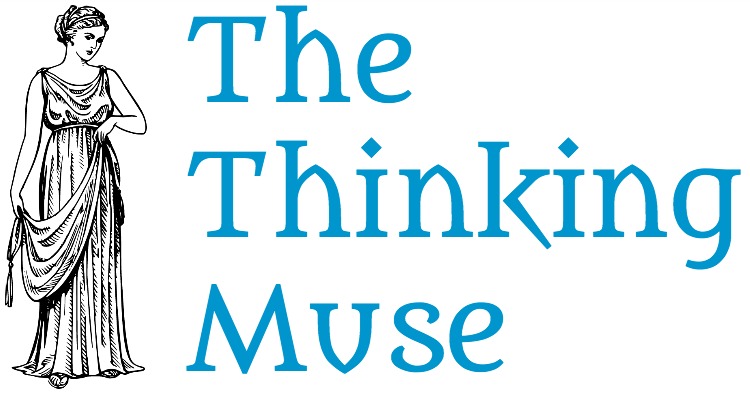5 reasons a kaleidoscope isn’t just for kids anymore and why you should collect them

Do you collect anything? Shells? Wine corks? Foreign coins?
This is how museums originated. In Renaissance times, travelers would bring artifacts back home from their adventures. The treasures would be kept in “cabinets of curiosities” or special rooms. Here, they would safeguard the items and entertain their friends with private viewings. Over time, the private collections became the foundation for museum collections through gifting or purchase.
Nowadays, people collect for a wide variety of reasons. This doesn’t include the extreme cases of collecting that is hoarding and is considered a disorder. Aside from this, reasons for collecting may include:
- investing
- enjoying
- socializing
- preserving the past
- studying the specimen
- the thrill of the hunt
- security
For this article, I wanted to share a review of a favorite item from one of my collections. My collection of kaleidoscopes. Kaleidoscopes are beautiful and collecting them is fun. But first, I want to tell you about kaleidoscopes and what makes them interesting.
5 reasons to love kaleidoscopes
Kaleidoscopes were invented by Sir David Brewster in 1816 and since then they have evolved a great deal. Now, there are multiple reasons to love them.
1. Variety
Styles:
• Hand-held. Just like it sounds, you hold the entire device in your hands.
• Parlor. These devices sit on a tabletop with a stand.
• Jewelry. These are usually worn on a chain as a necklace, but can also be incorporated into other jewelry.
• Sculptural. These works of art are usually tabletop or floor standing models. Some can be made for outdoors.
• Architectural. These are built into buildings and become part of the architectural elements.
• Projection. Images are projected on a wall or screen for many people to enjoy at one time.
• High tech. These are computer generated images.
Image mechanism:
• Wheel. Wheels/Discs attached to the device allow the user to rotate the media to produce the image.
• Cell. An enclosure on the end of the device contains the media that will tumble when rotating the device.
• Wand. An enclosed tube on the end of the device contains media, often suspended in a fluid, that will move with gravity to produce a moving image.
• Marble. A marble is attached to the end of the device to distort or create the image seen.
• Teleidoscopes. No image mechanism is incorporated to the device. The user can point the device at whatever they want and that becomes the media.
2. Symmetry
Humans love symmetry. You can watch a quick video about symmetry at TED-Ed.
The balance it provides is not only efficient, but brings about an order or harmony that makes sense to us. This allows us to relate the object to other things we see around us in nature, science, math, art, human behavior, and even our own bodies. That helps us make meaning of it and how it relates to us.
(See Related: Why stories are irresistible)
Take a look at the picture at the right. The geometry is so satisfying. It reminds me of the delicious symmetry you can see in a dance team performance and one of the many reasons I love it. I am really showing my concrete sequential style on this one.
3. Artistry
The images that kaleidoscopes produce are mesmerizing, but so are the devices. There are no limits to the creativity. The artists themselves are colorful.
Go take a look at the Brewster Kaleidoscope Society website. This society is for anyone who creates, sells, collects, or enjoys kaleidoscopes. Check out their promo video from their website below. (Credit: The Brewster Kaleidoscope Society)
4. Uniqueness
Kaleidoscopes are different from other types of art. First off, they are interactive. The user is literally hands-on creating the beautiful images.
Secondly, kaleidoscopes provide a different experience every time you use it. While other art is static, the ever changing images of the kaleidoscope can keep you hypnotized.
Thirdly, you don’t see a lot of them around. It is kind of a special circumstance that you encounter one.
5. Fun to collect and share
Ok, I am a little biased on this one. But, it is true. I have a shelf that my collection sits on. It is quite a conversation starter. When people realize what they are they immediately want to look through all of them. I have never met a person that looked through a telescope and didn’t like it. People love kaleidoscopes.
With the many variations in size, style, price, image mechanism, and media there is something for everyone. Plus, you don’t have to spend a ton of money because there are plenty of models that are moderately priced.
The favorite of my collection
My favorite kaleidoscope is by Sheryl Koch. I believe the model is called the Starlite Interchangeable.
I have had mine for about 10 years and got it as a gift. I found some online at Cape Kaleidoscopes or Kaleidoscopes To You or Appalachian Spring. I am not endorsing or promoting any one of these, I am just providing helpful information.
Why is it the favorite in my collection?
1. It looks cool.
It is a hand-held wheel kaleidoscope that comes with a walnut stand. It is made from lacquered brass ensuring it won’t tarnish. Internally, there are 3 mirrors and a magnification lens with 4 interchangeable wheels. It has some weight to it that gives it a nice substantial feel in the hands.
If you are a novice in the world of kaleidoscopes upon first looking at it you may not even realize what it is. The look is timeless and a little magical. I think it vaguely resembles the machine drawings of Leonardo da Vinci.
2. The imagery is beautiful.
The featured image of this article is a crude photo I took by putting my phone to the lens. I am no photographer, but I wanted you to see what type of image it creates. The interchangeable wheels are made of fused glass and brass. To change a wheel, just unscrew the knob on the axis and replace one or both of the wheels.
I really appreciate the glass media. Other kaleidoscopes will use plastic, beads, or shapes like hearts and stars. Those are a little too childish or cutesy for me. In my opinion, it cheapens the artistry. The glass has a polished and elegant look to it.
3. It is versatile.
There are 4 wheels of media. You can play around with the different options to change the look and feel of the imagery. It is a great to be able to customize the imagery for what you like. None of my other kaleidoscopes have this feature.
To be fair, this is the most expensive kaleidoscope in my collection. By I definitely put a recommend on this product. I would give this a 4.5/5. The only reason I knock it down half a star is for the price.
It would make a nice beginning to your collection or a unique gift for the person that has everything.
By the way, my runner-up favorite is a wand kaleidoscope. The organic movement of the fluid is neat, but the star shapes in the fluid bring it down in my book.
Collecting for everyone
Well, did I make you want to look through a kaleidoscope? If not, did you at least recognize that they have come a long way since you had that plastic toy as a kid?
I found a couple fun online kaleidoscope image generators. The first is build your own kaleidoscope at zefrank. It is just a fun little toy to play around with. It is different because it is animated. The second is an image tool that has a symmetry function to create kaleidoscopes. It is over at Sumo Paint. Be sure to hit the symmetry button that looks like a snowflake before you begin drawing.
Do you collect anything? Why? Do you seek out additions to your collection or do you rely on serendipity to find your next acquisition?
Let me know in the poll and comments.
Resources
“Brewster Kaleidoscope Society – Artists, Retailers & Collectors.” Brewster Kaleidoscope Society. Brewster Kaleidoscope Society, n.d. Web. 21 July 2015.
“Mind Styles – Anthony Gregorc.” Mind Styles – Anthony Gregorc. SUNY Cortland, n.d. Web. 21 July 2015.
The psychology of collecting from National Psychologist
The science of symmetry and why we’re drawn to it from motivatedmastery.com
Wikipedia contributors. “Symmetry.” Wikipedia, The Free Encyclopedia. Wikipedia, The Free Encyclopedia, 4 Jun. 2015. Web. 21 Jul. 2015.







